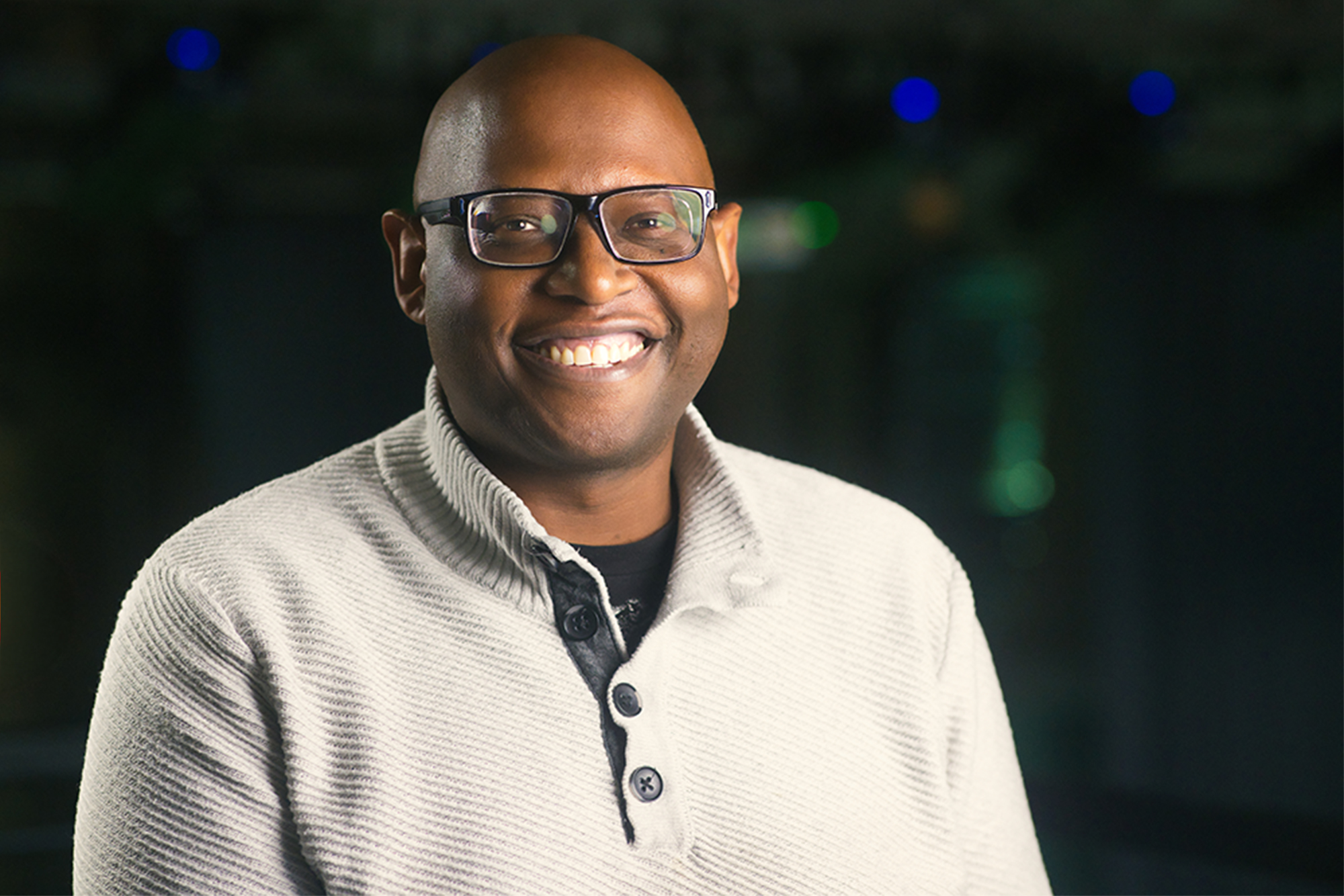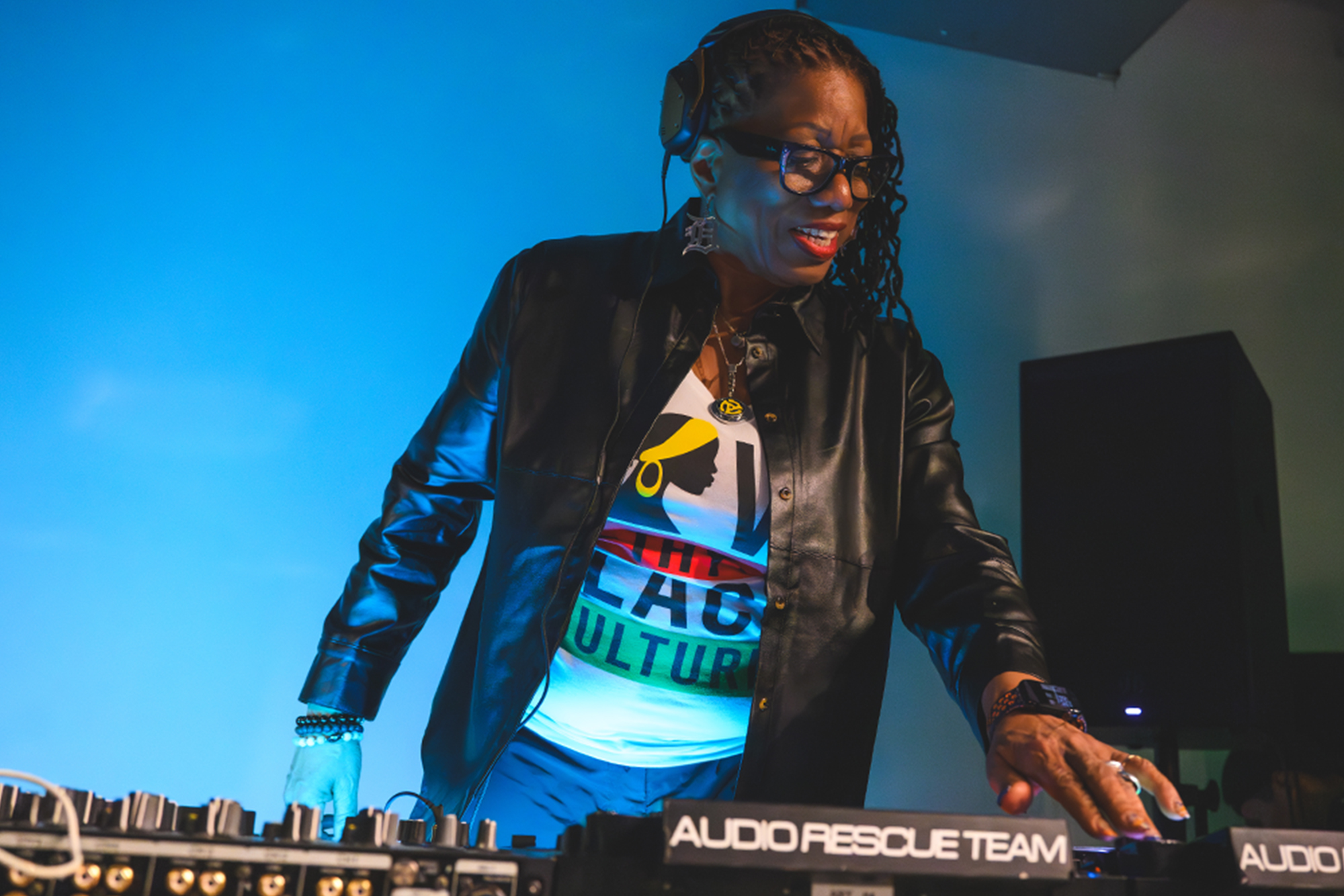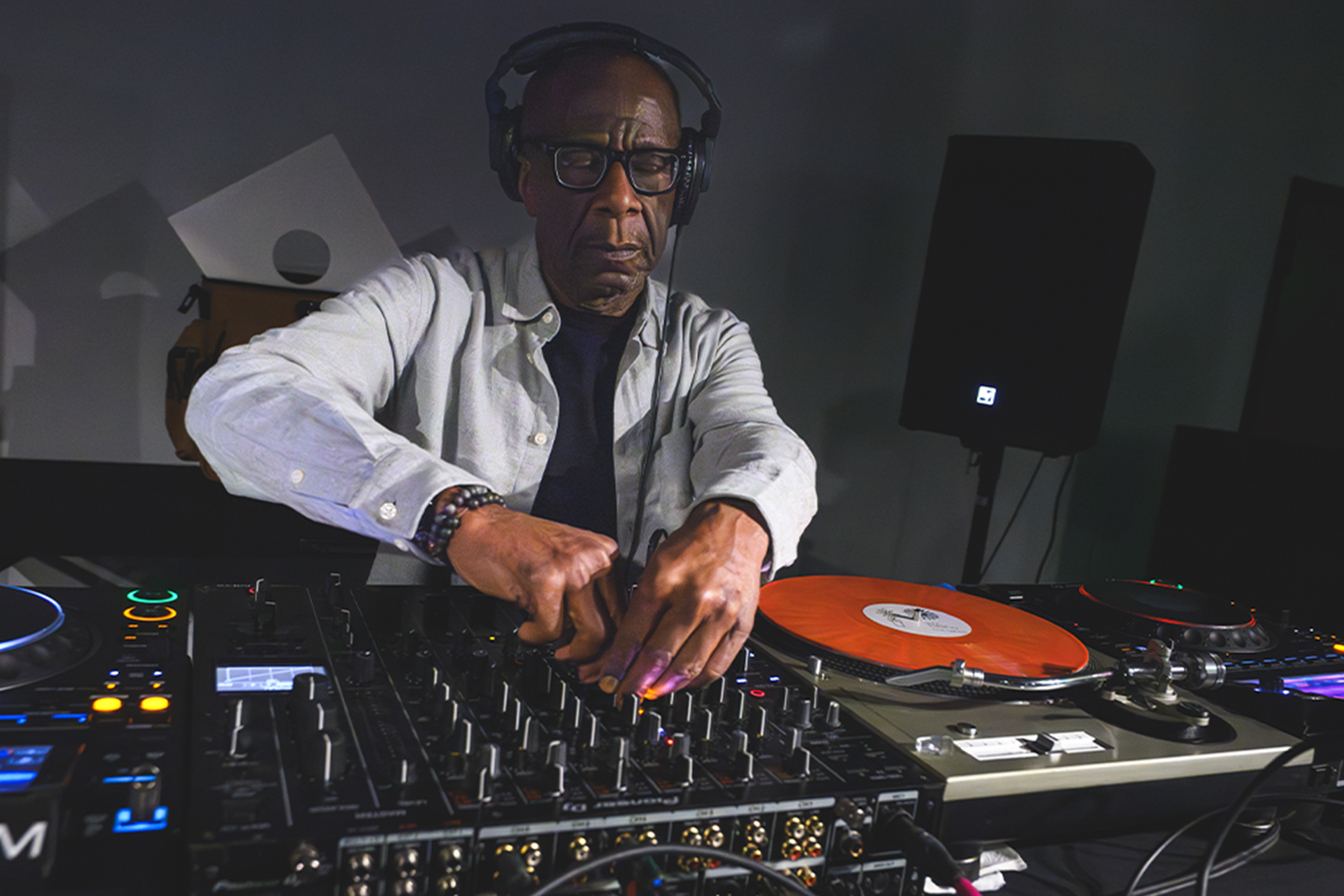The story of techno music often focuses on a global narrative without acknowledging that it began in Detroit, Michigan — a place where Black people for decades have harnessed sound and music to reflect their experiences.
During the 1970s and 1980s, techno was explored and celebrated by Black and queer communities across radio waves and in warehouse spaces around the city. Still today people from around the world annually visit the birthplace of techno to celebrate electronic music as part of the Movement music festival, which is coming to Detroit’s Hart Plaza May 24-26.

Julian C. Chambliss, professor of English at Michigan State University and the Val Berryman Curator of History at the MSU Museum, researches the intersections of culture, art and Afrofuturism, including ways it can be expressed through sound and music. More specifically, Chambliss examines how techno artists in Detroit have contributed to the legacy of Afrofuturism using sound to imagine new possibilities.
His work is part of the MSU Museum exhibition, “Techno: The Rise of Detroit’s Machine Music,” that runs through July 12 in East Lansing, Michigan. The immersive exhibition features a sound installation by iconic Detroit collective Underground Resistance and video installation by Detroit artist Andrew Charles Edman, also known as ACE, along with artifacts from the beginnings of techno.
Here Chambliss discusses how Detroit and its people are integral to techno, its sound, and vision for a more positive future.
What was happening in Detroit that influenced the creation of techno music?
During the 1950s and 1960s, Black people came to Detroit and participated in the postwar urban industrial success. Through that prosperity, they were able to build and sustain Black culture. That cultural transformation gave rise to a sense of Black success integral to narratives of freedom.
Then, you have this tremendous transformation associated with deindustrialization and automation. Production moved out of the city, and with the manufacturing that was still there, fewer people were needed. All that was connected to a shifting economic narrative of the city, which became emblematic of broader national anxiety about urban failure in the United States.
Techno was created in opposition to that broader national narrative about failure related to Detroit. It calls attention to how that story of failure is rooted in a white experience.
The kids that are making techno in the ‘70s and ‘80s are kids that have a vision of the future that’s more inclusive, a vision of a future that is dependent on that same technological narrative, and they are experimenting and thinking about the future through their music.
It’s a future that does take into account that the world has changed and their generation is highly connected to that change.
What do people get wrong about techno?

The one thing people get wrong about techno is that it began in Europe. Techno was invented in Detroit by Black youth and nurtured in Black and queer spaces. It is a music that speaks very deliberately about how those Black youth are thinking about the future. So, to say ‘Detroit techno’ gives the impression that the music created in the city is a subset of this European sound. In reality, it makes more sense to say ‘Berlin techno’ or ‘UK techno’ because Detroit inspires those sounds.
Techno emerged at a pivotal moment, with the rise of the internet and end of the Cold War, highlighting historical shifts. The music’s movement and adoption around the world led to it being repackaged in compilation albums and sold in New York City and Los Angeles, creating a sense that techno is a European sound. In a sense, techno’s immediate global impact helped to obscure, for some, the music centrality as a Midwestern Black sound practice.
How would you compare Motown with techno music?
Techno is a response of a new generation of Black people to their lived experience, just as Motown was a response from a post-World War II generation of Black people and their experiences.
Whether it’s Motown or techno, what you have is a generation of Black people who are creating culture that documents the Black perspective and draws inspiration from cultural dialogue in Detroit. They are reacting to changing circumstances and responding to it through their art.

Techno is the sound of a ‘post-civil rights era’ generation of Black people dealing with deindustrialization and the rise of the information economy. This generation has concerns about freedom, autonomy and the future, and the music they create addresses those concerns. In this way, techno is part of a pattern of cultural production that gives voices to place concerns. It is merely using the tools of the moment to promote a discussion about community and uplift.
How does techno at its roots speak to the Black experience and represent Afrofuturism?
From an Afrofuturist perspective, sound creation acts as an archive of experience. The sound created is information about a place and its people.
We call techno ‘machine music’ and part of the reason that makes sense is that Detroit is a city and culture shaped by industrial processes. The people and the culture are familiar with machines. The ability to understand machines, to program them to explore the possibilities of what the technology can do — this is part of the cultural fabric.
Techno, as an Afrofuturist cultural practice intrinsically recognizes that Black people have other stories to tell about the future. Their work manifests what that future looks like. In this way, techno is not so much an outlier but a continuation of Black speculative practice that uses sound to inspire important conversation about what is necessary to make a future where everyone is accepted and celebrated.